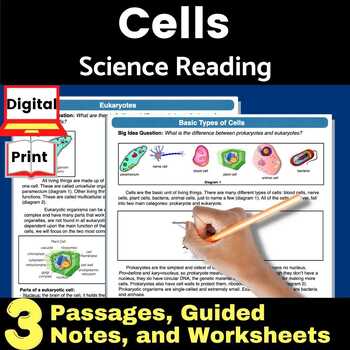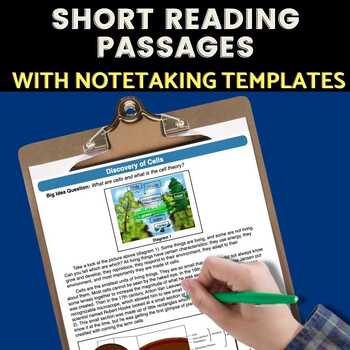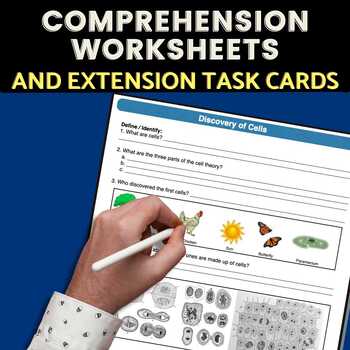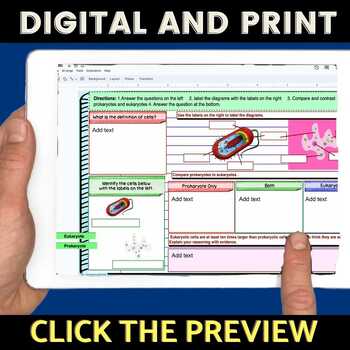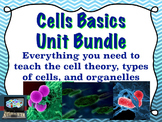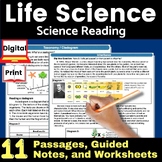cell theory structure & function prokaryotic & eukaryotic cells science reading
- PDF
- Google Apps™

What educators are saying
Also included in
- This Cells unit bundle has everything you need to teach students about the basics of cells. Topics include: Cell Theory, Prokaryotes vs. Eukaryotes, and Animal cells vs. Plant cells. Students will be engaged in their learning by watching and interacting with videos, doing online investigations, cPrice $34.42Original Price $38.25Save $3.83
- Looking for a way to increase science reading comprehension and science literacy in your classroom? Help your students learn all about different life science topics like cells, genetics, evolution, and natural selection with these life science science reading comprehension passages with note-takingPrice $24.99Original Price $29.00Save $4.01
Description
Looking for a way to increase science reading comprehension and science literacy in your classroom? Help your students learn all about the cell theory, prokaryotes and eukaryotes, plant and animal cells with this cells science reading comprehension passages with note-taking templates that guide the students, comprehension worksheets that have leveled questions, and Task cards to extend the learning. Perfect for Common Core Literacy Science Standards.
✎Print and digital versions
These comprehension reading passages and worksheets cover topics such as:
✅ Cell theory
✅ Prokaryote
✅ Eukaryote
✅ Plant Cells
✅ Animal Cells
What teachers like you are saying
⭐⭐⭐⭐⭐”My students and I absolutely loved this resource!!! The way this was planned out with the reading, diagrams, and questions was perfect. I mainly used this with my students but they used it one day with a substitute and they wrote to tell me how great it was! (I think they thought I created it so I have to tell them otherwise!)”
⭐⭐⭐⭐⭐”This was great! I left it as a sub plan and the students loved it! Thank you! ”
⭐⭐⭐⭐⭐”Great resource that made this topic easier for my students. ”
Click the Preview to learn more
This will guide students through reading information about the cell theory, prokaryote, eukaryote, plant cells and animal cells. They then have to apply their knowledge by answering leveled questions in the comprehension worksheets that accompany them and task cards at the end. They are perfect for use during the explain phase of the 5E model.
What is included:
- 3 Expository reading passages (Print and digital)
- 3 Notetaking templates for each passage (Print and digital)
- 3 worksheets to assess the students' comprehension of the reading passage (Print and digital)
- Answer keys to go with all worksheets
- 4 TASKS cards to extend their learning beyond the readings (Print and digital)
- Lesson Design on how to differentiate the lesson in your classroom
_______________________________________________________________
﹩Save Time and Money and Buy the Life Science reading Comprehension passages bundle which includes 11 different reading passages.﹩
You might also like
Physical Science Digital Interactive Notebook Bundle covering over 100 topics perfect for the explore or evaluate phase of the 5E model
_______________________________________________________________
Connect with Adventures in ISTEM
Be sure to follow my TpT store by clicking on the red “Follow Me” next to my Seller picture to receive notifications of new products and upcoming sales.
Blog-adventures in ISTEM for more great ideas and strategies to use in your classroom
Get weekly tips and strategies by joining the Adventures in ISTEM Newsletter
Terms of Use
Copyright Adventures in ISTEM, LLC.
All rights reserved by the author.
Permission to copy for single classroom use only.
Not for public display.
Please purchase additional licenses if you intend to share this product.
Adventures in ISTEM is not associated with other brand names, product names, or trademarks cited in this publication, including the Google Drive™ online storage service and Microsoft OneDrive™. The Interactive Digital Flip Book is an independent publication and is not affiliated with, nor has it been authorized, sponsored, or otherwise approved by Google Inc. Google and the Google logo are registered trademarks of Google Inc., used with permission. The Interactive Digital Flip Book is an independent publication and is not affiliated with, nor has it been authorized, sponsored, or otherwise approved by Microsoft Inc. Microsoft and the Microsoft logo are registered

